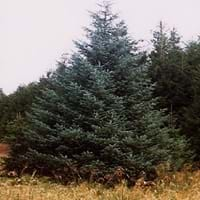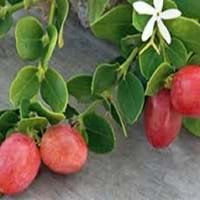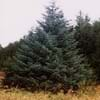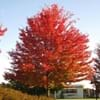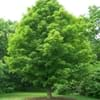Life Span
Perennial
Perennial
Origin
Eastern Asia
Central Asia, Southern Asia, Western Ghats, India
Types
Black Spruce, Norway Spruce, Colorodo Spruce
congesta, paucinervia
Habitat
By seashore, Humid climates, Temperate Regions
Fertile bottom land, moist forests, Temperate Regions, Tropical Forests
USDA Hardiness Zone
6-8
Not Available
Sunset Zone
A3, 2a, 2b, 3a, 3b, 4, 5, 6, 7, 8, 9, 10, 12, 14, 15, 16, 17, 18, 19, 20, 21, 22, 23, 24
Not Available
Habit
Oval or Rounded
Upright/Erect
Flower Color
Red
Pale White, White
Flower Color Modifier
Bicolor
Bicolor
Fruit Color
Red, Green
Purple, Black
Leaf Color in Spring
Green, Light Green
Green
Leaf Color in Summer
Green
Green
Leaf Color in Fall
Red, Crimson
Green
Leaf Color in Winter
Not Available
Light Green
Plant Season
Spring, Summer, Fall, Winter
Spring, Summer, Fall
Sunlight
Full Sun, Partial Sun, Partial shade
Full Sun, Partial Sun, Partial shade
Growth Rate
Medium
Medium
Type of Soil
Clay, Loam, Sand
Loam
The pH of Soil
Acidic, Neutral
Acidic, Neutral, Alkaline
Soil Drainage
Average
Well drained
Bloom Time
Early Spring, Spring, Late Spring, Early Summer
Spring
Tolerances
Heat Tolerance, Humidity, Light Frost
Drought
Where to Plant?
Ground
Ground
How to Plant?
Seedlings, Spores
Seedlings, Stem Cutting
Plant Maintenance
Medium
Medium
Watering Requirements
Needs less watering
Keep the ground moist but not water-logged
In Summer
Lots of watering
Lots of watering
In Spring
Moderate
Moderate
In Winter
Average Water
Average Water
Soil pH
Acidic, Neutral
Acidic, Neutral, Alkaline
Soil Type
Clay, Loam, Sand
Loam
Soil Drainage Capacity
Average
Well drained
Sun Exposure
Full Sun, Partial Sun, Partial shade
Full Sun, Partial Sun, Partial shade
Pruning
Prune when young, Remove dead branches
Prune if you want to improve plant shape, Remove dead leaves
Fertilizers
slow-release fertilizers
Compost, fertilize in growing season
Pests and Diseases
Aphids, Birds, Snails
Aphids, Earwigs, Insects, Mildew, Red blotch, Rust, sawflies
Plant Tolerance
Heat Tolerance, Humidity, Light Frost
Dry soil, Heat And Humidity
Flowers
Insignificant
Insignificant
Flower Petal Number
Single
Single
Foliage Texture
Fine
Medium
Foliage Sheen
Matte
Matte
Attracts
Ants, Fruit Bats, Snails, Squirrels
Birds, Butterflies, Fruit Bats
Allergy
Constipation, Diarrhea, Dizziness, Sore eyes
Eczema, Mouth itching, Throat itching
Aesthetic Uses
Showy Purposes
Not Available
Beauty Benefits
For treating wrinkles, Making cosmetics, Speed hair growth
good for lips, Remove blemishes
Edible Uses
Sometimes
Yes
Environmental Uses
Agroforestry, Air purification, Nesting sites for birds, soil stabilisation
Air purification, Food for animals, Food for birds, soil stabilisation
Medicinal Uses
anti-inflammatory, Back pain, Emollient, Immunity, Obesity
Anemia, Diuretic, Potassium, Rich in Iron, Vitamin C
Part of Plant Used
Leaf Stalks, Root
Fruits, Leaves
Other Uses
Constructing Boats, Making piano frames, Used as fuel, Used in Furniture, Used in making musical instruments, Used in paper industry, Used in pencil industry
Added to salads, Cosmetics, Culinary use, Used as a nutritious food item, Used As Food, Used for its medicinal properties
Used As Indoor Plant
No
No
Used As Outdoor Plant
Yes
Yes
Garden Design
Container, Feature Plant, Mixed Border, Topiary / Bonsai / Espalier
Edible, Fruit / Fruit Tree, Hedges
Botanical Name
ACER palmatum 'Osakazuki'
Carissa carandas
Common Name
Japanese Maple, Osakasuki Japanese Maple
Black Currant
In Hindi
सरल
करोंदा, कालि मैना
In German
Fichten
Carandas
In Spanish
Picea
karondas
In Portuguese
Picea
karondas
In Polish
Świerk
karondas
Phylum
Pinophyta
Magnoliophyta
Class
Pinopsida
Magnoliopsida
Order
Pinales
Gentianales
Family
Aceraceae
Apocynaceae
Clade
Not Available
Angiosperms, Asterids, Eudicots
Tribe
Not Available
Not Available
Subfamily
Piceoideae
Not Available
Number of Species
Not Available
Season and Care of Sitka Spruce and Karonda
Season and care of Sitka Spruce and Karonda is important to know. While considering everything about Sitka Spruce and Karonda Care, growing season is an essential factor. Sitka Spruce season is Spring, Summer, Fall and Winter and Karonda season is Spring, Summer, Fall and Winter. The type of soil for Sitka Spruce is Clay, Loam, Sand and for Karonda is Loam while the PH of soil for Sitka Spruce is Acidic, Neutral and for Karonda is Acidic, Neutral, Alkaline.
Sitka Spruce and Karonda Physical Information
Sitka Spruce and Karonda physical information is very important for comparison. Sitka Spruce height is 460.00 cm and width 460.00 cm whereas Karonda height is 120.00 cm and width 120.00 cm. The color specification of Sitka Spruce and Karonda are as follows:
Sitka Spruce flower color: Red
Sitka Spruce leaf color: Green and Light Green
Karonda flower color: Pale White and White
- Karonda leaf color: Green
Care of Sitka Spruce and Karonda
Care of Sitka Spruce and Karonda include pruning, fertilizers, watering etc. Sitka Spruce pruning is done Prune when young and Remove dead branches and Karonda pruning is done Prune if you want to improve plant shape and Remove dead leaves. In summer Sitka Spruce needs Lots of watering and in winter, it needs Average Water. Whereas, in summer Karonda needs Lots of watering and in winter, it needs Average Water.
